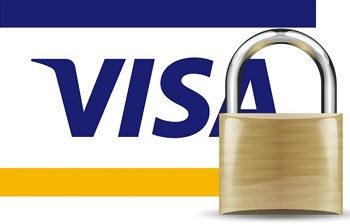Customers who are traveling may soon find it easier to charge their purchases with this added layer of protection.
When Visa customers travel to another country, a new mobile security feature from the credit card issuer may make it easier for them to be able to prevent fraudulent charges or having to overcome the automatic protection barriers that the bank may implement when trying to make a purchase.
The strategy is meant to make it easier, safer, and more convenient for Visa customers to shop abroad.
Travelers currently need to call their banks to tell them that they will be traveling, and where, or they risk having their cards frozen from the first moment that they are used in a foreign country. Visa is hoping to be able to prevent both of those occurrences from being required by using mobile security to be able to track the customer’s location and know that he or she is the one who is using the credit card when it is swiped at any terminal in the world.
The mobile security service uses geolocation technology to verify the customer’s position when a card is swiped.
 This lets Visa check to make sure that the customer and the card are in the same place when a purchase transaction is attempted on the card. This is done by checking the location of the customer’s mobile device. Should there ever be a mismatch, additional security measures will be taken in order to help to determine whether or not it is a legitimate purchase attempt, without necessarily cutting off the card, right away. This way, if a smartphone is left in a hotel room, it doesn’t necessarily mean that the customer will be without the use of his or her cards.
This lets Visa check to make sure that the customer and the card are in the same place when a purchase transaction is attempted on the card. This is done by checking the location of the customer’s mobile device. Should there ever be a mismatch, additional security measures will be taken in order to help to determine whether or not it is a legitimate purchase attempt, without necessarily cutting off the card, right away. This way, if a smartphone is left in a hotel room, it doesn’t necessarily mean that the customer will be without the use of his or her cards.
This method of using the location of the mobile device makes it less likely that a bank will be required to mistakenly decline a transaction that looks suspicious but that is actually legitimate. The company is working its mobile security feature into a module. This way, banks can incorporate it into their own mobile banking apps. Then, when a customer travels and tries to use the card, a partner of Visa, Finsphere – a geospacial analytics company – pings the app in order to be able to locate the customer’s device. That finding is then reported to Visa to see if it is a match.

 Both the Facebook and Twitter apps are ready to be downloaded even more than a month ahead of the expected release date of the device, itself. The social media mobile apps were also both created for Google Glass, although right before Google announced that it was putting its glasses wearables manufacturing to a stop, Twitter had already withdrawn its own application for that device.
Both the Facebook and Twitter apps are ready to be downloaded even more than a month ahead of the expected release date of the device, itself. The social media mobile apps were also both created for Google Glass, although right before Google announced that it was putting its glasses wearables manufacturing to a stop, Twitter had already withdrawn its own application for that device.